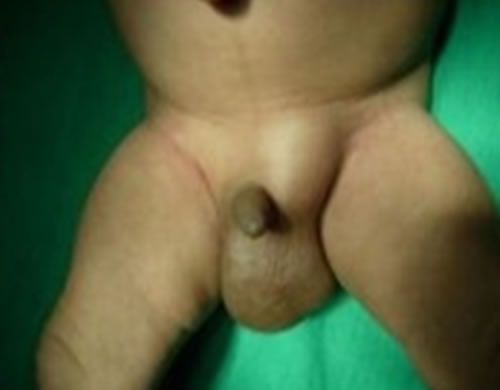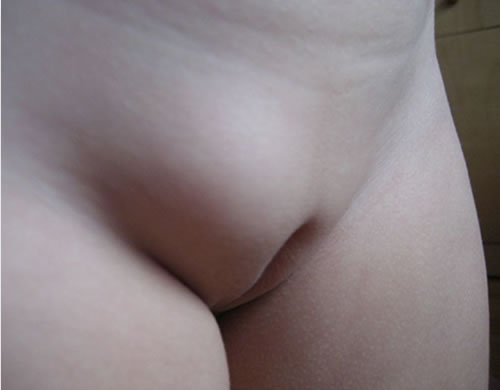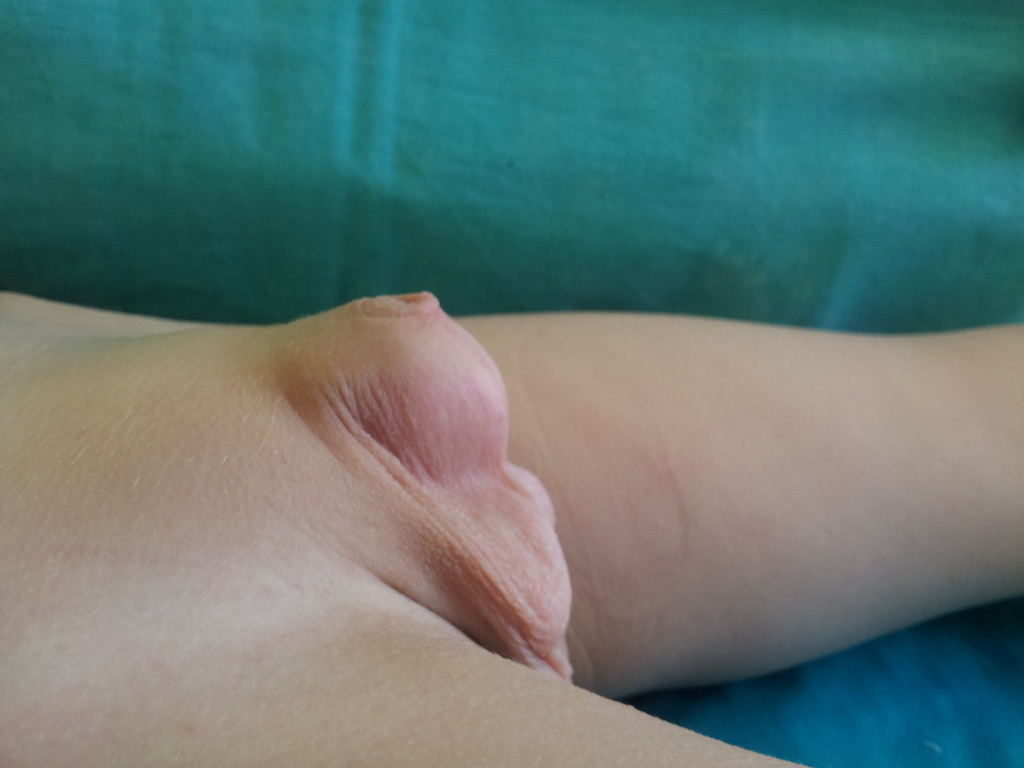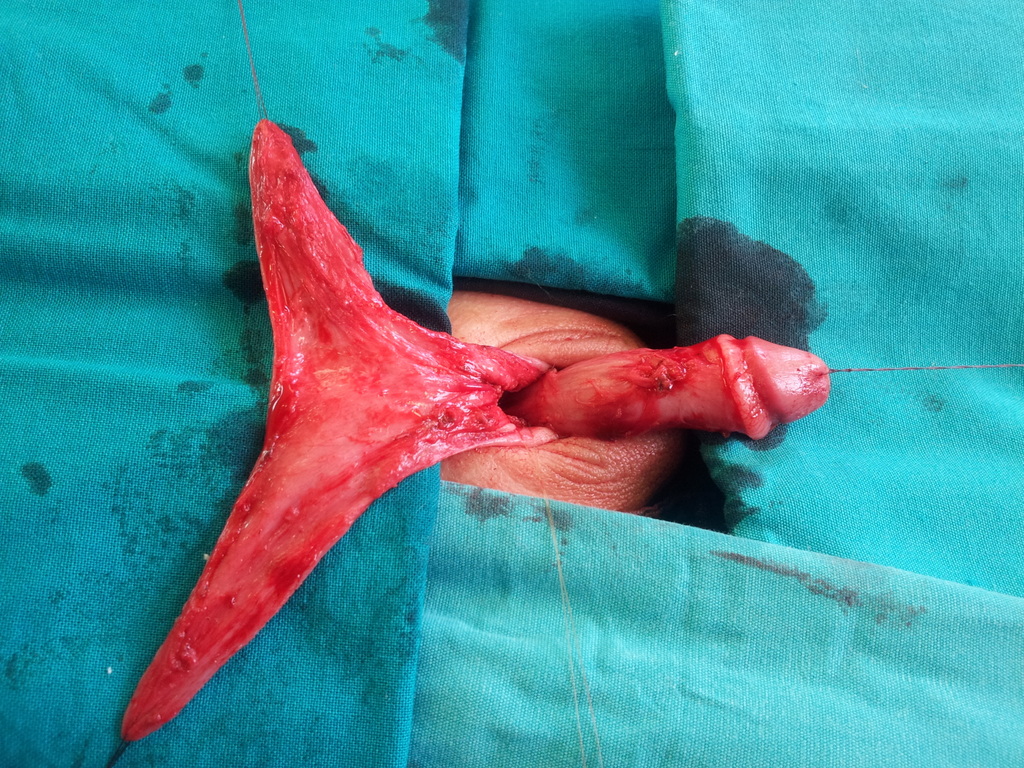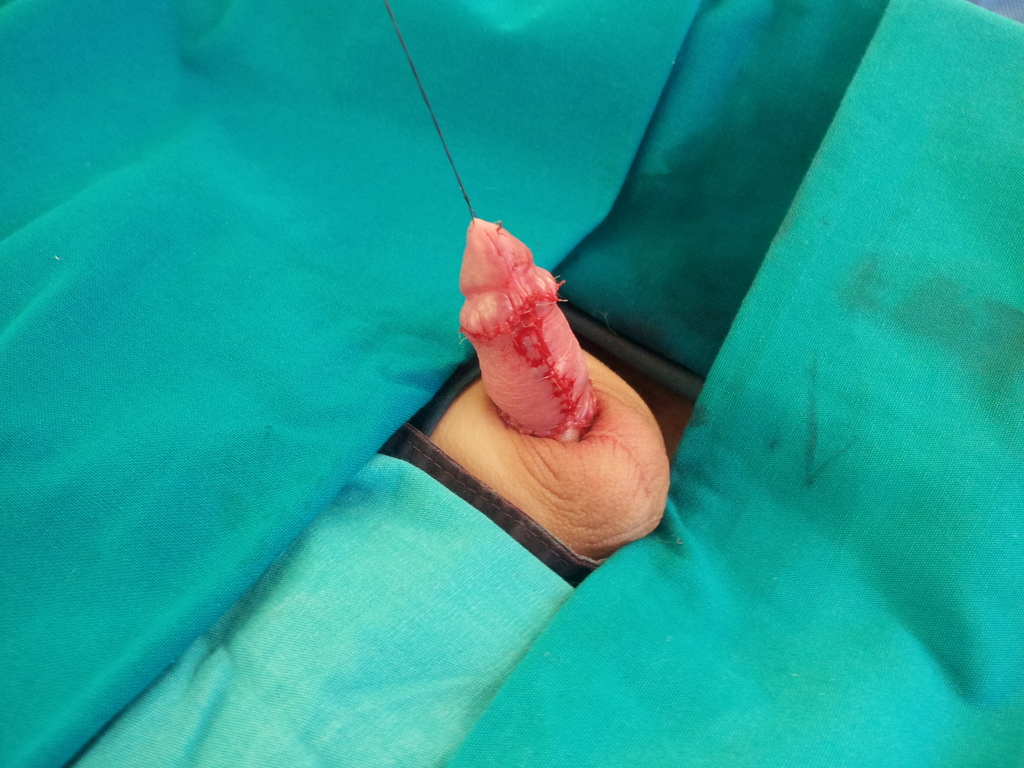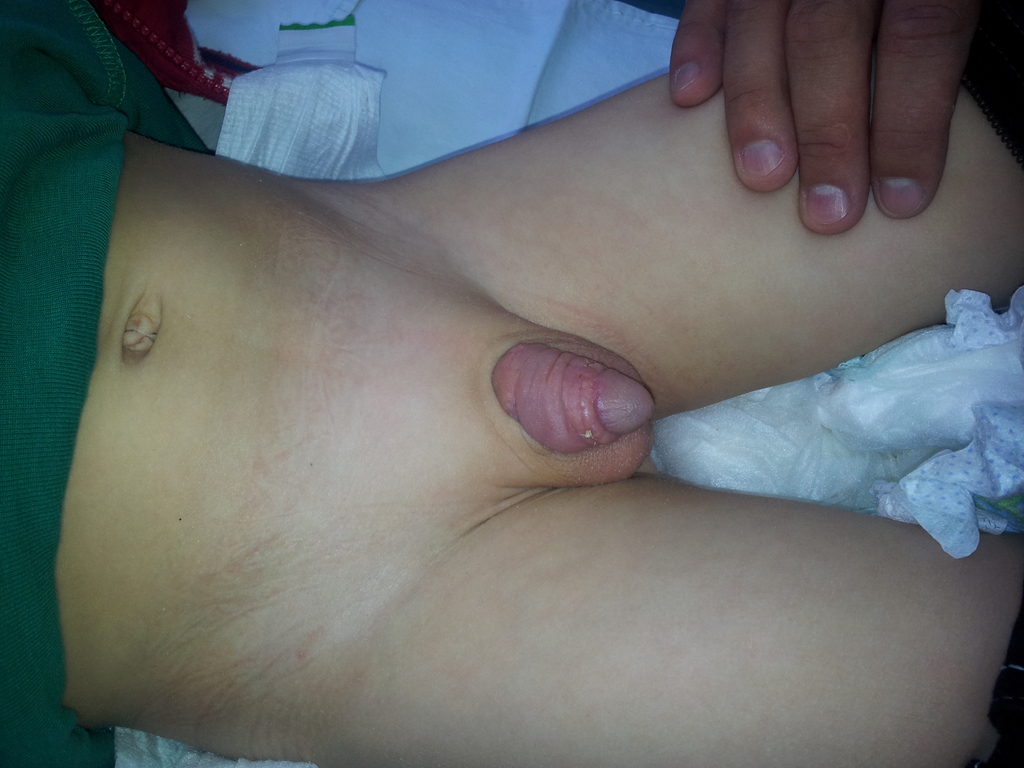Inguinal hernia
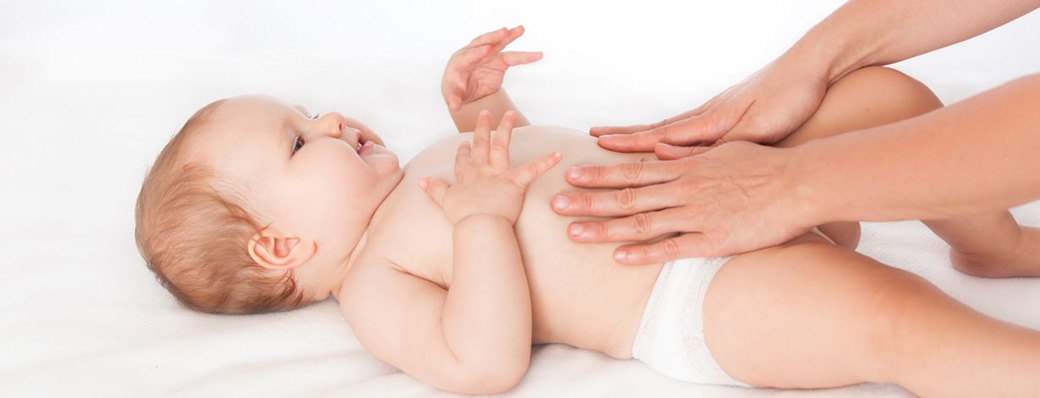
What is inguinal hernia?
An inguinal hernia occurs when tissue, such as part of the intestine or an ovary, protrudes through a weak spot in the abdominal muscles into the inguinal canal or in the scrotum. (Figure 1).
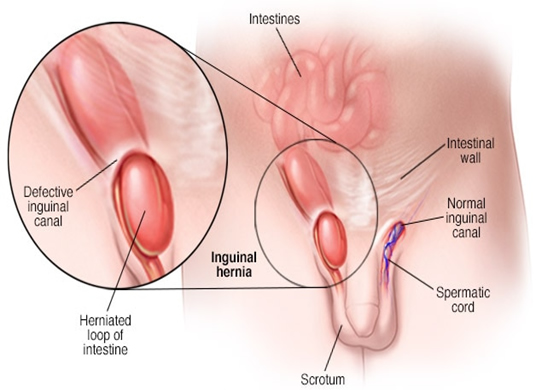
Figure 1- Inguinal hernia on the right side with intestines in the hernia sac
What is the difference between an inguinal hernia and hydrocele?
In inguinal hernias, abdominal organs pass into the inguinal canal or the scrotum. In hydrocele only the abdominal fluid enters the scrotum. Hydrocele usually does not need surgical treatment when the inguinal hernia has to be treated surgically.
What are the possible causes?
In infants, the inguinal hernia occurs as a result of a congenital anomaly that involves the part of the abdomen which is not closed. Under normal circumstances that should close after the testicle is descended from the abdomen to the scrotum. Premature babies are more likely to have these anomalies, so inguinal hernias are more common in premature babies than in term ones. Usually the hernia is visualized in moments of effort that the child performs during crying or coughing. It is important to note that crying does not cause the inguinal hernia to form but helps to make it visible.Signs and symptoms in children?
A bulge in the area on either side of child’s pubic bone, which becomes more obvious when the child is upright, especially if it coughs or strains. The swelling is painless unless the contents of the hernia are trapped and it is easily returned to the abdomen by pressure. The child may sometimes complain of mild pain or discomfort in the area around the hernia.
What is an incarcerated hernia?
If you aren't able to push the hernia in, the contents of the hernia may be trapped (incarcerated) in the abdominal wall. An incarcerated hernia can become strangulated, which cuts off the blood flow to the tissue that's trapped. A strangulated hernia can be life-threatening if it isn't treated. The child is nauseous, vomiting and may have a fever. A hernia bulge turns red, purple or dark and there is inability to move the bowels or pass gas. Failure to treat this condition immediately and delaying the visit to the doctor may lead to deterioration of the organ inside the hernia sac, if it is the intestine it can lead to bursting of the bowel wall with leakage of intestinal contents through the abdomen and that can endanger the child’s life. If the ovary is twisted inside the hernia sac and is not operated in the time frame, it can completely lose its function.
How to diagnose inguinal hernia?
A physical exam is usually all that's needed to diagnose an inguinal hernia. Your doctor will check for a bulge in the groin area. Because standing and coughing can make a hernia more prominent, you'll likely be asked to stand and cough or strain. A bulge that can be easily returned to the abdomen indicates and “uncomplicated” inguinal hernia. If the boy has an inguinal hernia, a large one may show swelling in the inguinal canal and the scrotum together.
When you see a bulge in the groin area, you should take your child to the doctor for definitive diagnosis and planning for the surgical treatment. Also, you can take a photo of the swelling in the groin from the side because the intestines from the hernia sac can be withdrawn and by the time you see the doctor the bulge does not have to be seen. In that case, photography can help.
In the case of a swelling in the groin are that cannot be returned to the abdomen, it indicates that the hernia is trapped and you should immediately see the doctor.
If the diagnosis isn't readily apparent, your doctor might order an imaging test, such as an abdominal ultrasound, CT scan or MRI.
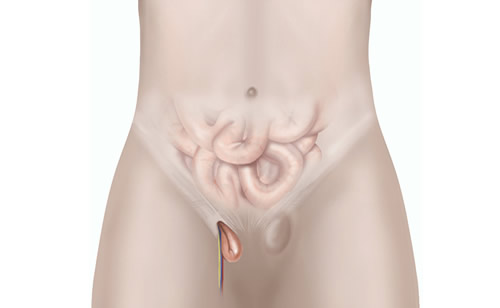
How to treat an inguinal hernia?
Treatment for an inguinal hernia is surgical. The operation is called a “herniectomy”.
An uncomplicated inguinal hernia, hernia that did not become trapped does not require immediate surgery. Surgical treatment is planned in this case.
In the case of a incarcerated hernia and if the infant is brought within six hours of trapping, the physician will attempt to return it to the abdomen by manual pressure. If that is successful, surgery is performed in a day or two. If the contents of the hernia cannot be returned to the abdomen or more than six hours have passed and the child has started vomiting, the doctor should not try to bring the content of the hernia back to the abdomen by hands. The child is urgently admitted and surgical treatment is performed.How is the herniectomy performed?
It is a surgical operation for the correction of a bulging of internal organs or tissues through the wall that contains it.
It is done under general anesthesia. The child needs to be healthy before surgery to avoid the risk of anesthesia-related complications.
If the hernia is incarcerated the surgery has to be done immediately.
It involves a surgeon making a long incision directly over the hernia then using surgical tools to open the cut enough to access it. Tissues or a displaced organ are then returned to their original location, and the hernia sac is removed. The surgeon stitches the sides of the muscle opening or hole through which the hernia protruded. Once the wound has been sterilized, it is stitched shut.
The operation takes about 20 or 30 minutes.
The child has a small incision in the groin. Most often, the wound is sutured with dissolvable stiches that dissolve on its own, so there is no removal by the surgeon. The other option is that a suture is placed on the wound and is removed after seven days after surgery. A wound patch similar to an adhesive bandage is places on the wound. Redressing the wound is comfortable and painless for the child.Follow-up after surgery
Almost always the child can go home the same day, after normal fluid and solid food intake has been established, if the child does not vomit and is completely “awakened” from anesthesia. The child gets the medication for the pain upon discharge. Some children have to stay in the hospital for one day in case they are slow to wake up from anesthesia. The child needs to rest after surgery.
Regular check-ups are on the second or third day until the wound heals and after that as needed.
After a month, the child returns to normal physical activity.

